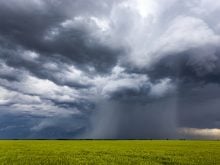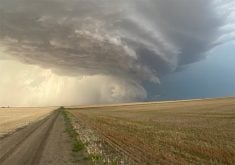The 2023 global weather summary done by the Copernicus Climate Change Service (C3S), which is part of the European Center for Medium-Range Weather Forecasts, found that last year was the warmest calendar year in global temperature data records going back to 1850.
The year had a global average temperature of 14.98 C, 0.17 C higher than the previous highest annual value in 2016. Global records are usually only beaten by a little bit, and 0.17 C is a big jump.
It was also the first year of El Nino, which typically increases global temperatures. Historically, the warmest global temperatures occur in the second year of El Nino, meaning 2024 may break 2023’s record as hottest year on record.
Now, let’s take a look at last year’s weather across the Prairies.
The table shows the mean yearly temperature for the main reporting stations I use, along with the deviation from the 30-year average, total precipitation, deviation from the average precipitation and the percent of average precipitation. Temperatures are in Celsius and precipitation is in millimetres.
The table shows that 2023 was definitely a warm year, with all stations reporting above average temperatures. All but two reported a mean yearly temperature greater than 1.0 C, and all the Alberta stations reported mean yearly temperatures greater than 2.0 C.
This shows just how warm it was in that region last year. Precipitation across the board was below average. Most locations had 75 percent of average. Saskatchewan was the driest region at 65 percent of average.

With all the talk of a warming planet, I thought it would be interesting to see trends with yearly temperatures across the Prairies. I looked at Winnipeg’s data from 1977 to 2023 and found there has been a general warming trend in the data of about 1.0 C over this period.
From 1977 to 1997, there were two years with mean yearly temperatures above 4.0 C and from 1998 to 2023 there were nine years above 4.0 C. Over the last eight years, five have seen mean yearly temperatures above 4.0 C.
So, temperatures in Winnipeg have been rising and that warming trend seems to be accelerating. I will work on this to see if the same trend is occurring in Saskatchewan and Alberta.
In the next issue we will continue to look back at prairie weather in 2023 and, depending on how cold it gets in Alberta and Saskatchewan, I may visit that topic as well.
Daniel Bezte is a teacher by profession with a BA in geography, specializing in climatology, from the University of Winnipeg. He operates a computerized weather station near Birds Hill Park, Man. Contact him at dmgbezte@gmail.com.


















